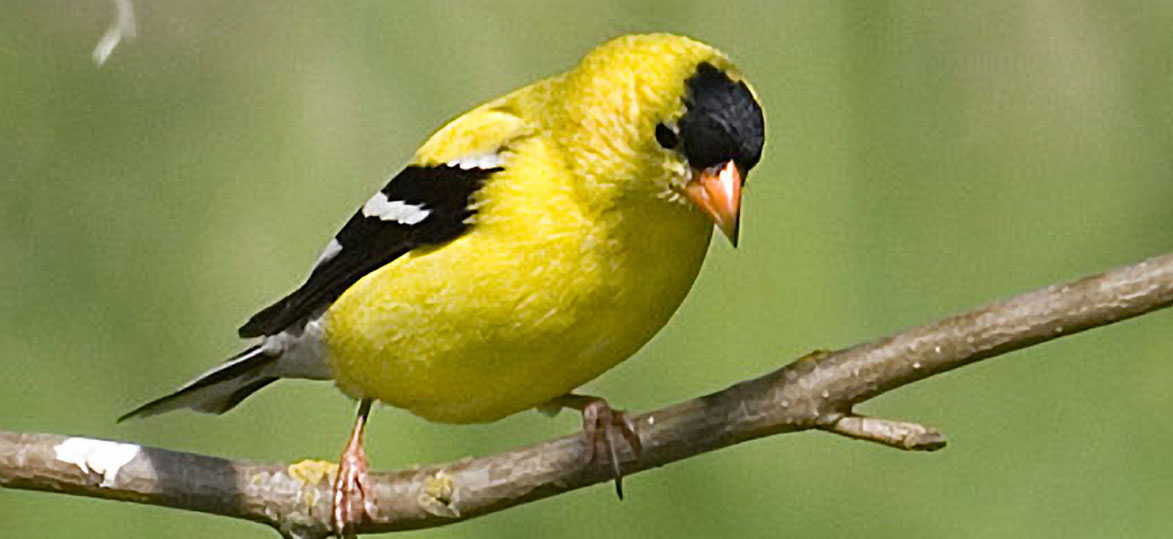
The American Goldfinch (Carduelis tristis) is a bright yellow bird often seen at birdfeeders. The goldfinch is found throughout the northern half of the United States and is a year-round resident of Vermont.
Habitat
The American Goldfinch prefers open, grassy areas, such as pastures, meadows, and croplands. They can often be seen in orchards and in trees along roadsides. They prefer land in the first stages of succession, with brushy thickets and tall weeds, and also make use of nearby bushes and trees.
The goldfinch is social, except during the nesting season. It is not uncommon to find the goldfinch forming a colony of sorts, with two or three pairs group their territories together. This is particularly true in areas where food and water supplies are plentiful.
Reproduction
The American Goldfinch doesn't nest or even mate until mid-to late-summer when flower seeds have ripened. As a result it only raises a single brood each year. Nest building in July may take 13 days, but only requires half this time by late August.
The nest is made out of grass, bark strips, and stems of milkweed, lined with thistle and cattail down. It is usually built in the upright fork of a small sapling or shrub, at a height varying from three feet to 25 feet. It is not uncommon, though, to see them nesting as high as 45 feet in large trees.
The female lays four to six pale blue eggs in her nest and incubates them for 12 to 14 days. The young hatch with a downy covering and with eyes closed. After three days, their eyes open and the young continue to develop quickly. By the time the chicks are ten to 16 days old, the down changes to an olive yellow plumage, they fledge, or learn to fly. Two weeks later, they are completely independent of their parents.
Diet
The American Goldfinch has a varied diet. Its staples are seeds, especially thistle seeds. Although goldfinch feed on the seeds of wild thistle, the thistle you put in your feeder is not actually related to wild thistle. Regardless, goldfinches can often be seen at bird feeders, even in the summer.
Many native and introduced plants are important sources of food for the American Goldfinch. The seeds of dandelion, speckled alder, chicory, evening primrose, mullein and a variety of other wildflowers contribute to their diet. Occasionally, they will also feed on insects, such as caterpillars and plant lice.
Management
It is easy to attract the American Goldfinch to bird feeders, provided the proper food is offered. They prefer thistle, sunflower, or Niger seeds, and would rather feed from hanging column feeders as oppose to box shaped ones. Goldfinch will also eat from trays or bird platforms at the window.
Status
The American Goldfinch is common throughout Vermont, especially in areas that provide prime habitat, such as pastures and meadows. However, a 4% decline each year in the goldfinch population has been observed by the United States Breeding Bird Survey. Factors that may be contributing to this overall decline in numbers could be loss of breeding habitats resulting from changing agricultural practices as well as human expansion.
